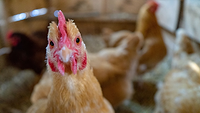UK Sees Increases in Cases of Infection by Important Foodborne Pathogens During 2023–2025

Image credit: James Archer via CDC Public Health Image Library
The UK Health Security Agency (UKHSA) recently published its first annual report summarizing infectious disease trends, including trends related to important foodborne pathogens like Escherichia coli, Salmonella, Listeria monocytogenes, Campylobacter, and norovirus. The report covers data for 2023–2025.
Overall, the report highlighted re-emergence, re-establishment, and a rise in infections by foodborne pathogens during the reporting period, which UKHSA says could be attributable to a return to normal behaviors coming out of the COVID-19 pandemic. For example, in 2023, listeriosis cases increased by 12.7 percent in England and Wales (177 total reported cases), in comparison to the five-year median. Additionally, seven listeriosis outbreaks detected in 2023–2025 were linked to the consumption of smoked fish, soft cheese, and beef products.
An increase in Shiga toxin-producing E. coli (STEC) infections has also been observed following the pandemic period, with one STEC O145 outbreak resulting in more than 250 cases of illness in summer 2024 alone. The outbreak was linked to the consumption of contaminated leafy greens on sandwiches.
Moreover, significant increases in laboratory-confirmed cases of campylobacteriosis and salmonellosis were reported between 2022 and 2024. The incidence of Campylobacter infection rose by 27 percent from 2022 to 2024, while Salmonella infection incidence increased by 24.1 percent.
As has been previously reported by UKHSA, England was hit hard by norovirus in fall 2024 and winter 2024–2025. Weekly data from February 2025 showed the highest levels of norovirus activity since weekly data reporting began in 2014. From February 3–16, laboratory-confirmed cases norovirus were 29.4 percent higher than the previous two weeks, and more than double the five-season average (168 percent) for the same two-week period. The increased number of norovirus infections seen in fall/winter 2024–2025 are attributed to the emergence of an uncommon genotype, GII.17, in addition to a wave of cases caused by the more common GII.4 genotype.
UKHSA intends to release further data analyses for Campylobacter, Salmonella, and Cryptosporidium when the 2024 annual reports for the respective pathogens are published.
Looking for a reprint of this article?
From high-res PDFs to custom plaques, order your copy today!






